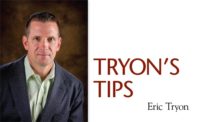Sometimes spending more dollars on the front end can save you a whole a lot more on the backend. I want to challenge you to think about the bigger perspective as it relates to the decisions and investments we make. This journey will require us to dig a little deeper. Challenge ourselves to become educated with the residual outcomes that are generated because of the decisions we make (or not make) in our business. The difficultly arises because the answers are not always obvious and often elusive. I would trust most of us would agree that the stone industry is a much more complicated beast than it may appear on the surface. Bottom line — determining the true total cost (or benefit) of ownership as it pertains to our decisions is worth the effort to investigate.
If you do not have any glaring obvious areas to explore as it relates to this topic, I would suggest these two areas and in this priority of order:
• Identify and list the top friction points in your company or department. In other words, what situations or events are disruptive or prevent the team from being successful each day?
— Examples from the top of my list – Rework (inaccurate templates, CAD errors, careless installs), equipment failure and downtime, inconsistent employee performance
— In my opinion, great leaders remove the friction points and the obstacles for the people they lead and manage.
• Look at the line items inside your P&L statement and answer the following question. If we had to decrease (or increase) this number how would we do it?
— Most of the time, we are trying to decrease costs and increase revenue (However, this can also be one of those “elusive” areas that does not tell the entire story and the key becomes understanding all the collateral influential factors.)
Over the past two decades, here are some of the learnings I gained determining true accurate cost of ownership around key business decisions.
• Compensation level of an employee vs. impact they make on the business
— What is the employee delivering to the team? I put an extremely high value on teammates who do not make repeated costly mistakes, especially in areas that impact the masses (template, CAD department are perfect examples). If a mistake is made at template or in the CAD department, the cost and expense is massive, and it will generate a lot of friction points and obstacles for the team. If a template is wrong, the entire operations team is spending valuable time (often overtime hours) and resources producing something that is not right. OUCH! I believe one of the most important jobs in a stone fabrication business is the measure/template technician. A great measure technician should be compensated very well for delivering perfect templates. The value of their perfect template is much greater than reducing the expense line of their compensation. How valuable is the perfect template to the entire team? If a measure technician delivers perfection in their role, they remove a lot of friction points and obstacles for the team. Paying more on the front end for the high performance and results can save thousands of dollars in the long run.
• Purchasing equipment or software
— All too often I hear business owners and leaders make comments like, “I can’t afford that xxxx, the expense is too high…” All too often the correct answer is their business will suffer if they do not to make the investment. They fail to look at the residual impact and benefit the item has on the business operations and the team? Does the investment remove any friction points? Does it create any efficiencies? I strongly suggest looking at these decisions from a lens of an investment and not an expense. What results are generated if a particular asset is introduced and implemented into a company? What is the overall investment vs. the benefits provided (Return On Investment (ROI)? These questions should be given a much deeper consideration to determine the total cost/benefit of ownership.
• To provide value to this exercise, we need to start by looking at all the adjacent points that will be impacted by a decision.
— How much time will it save the team (personnel hours – annually)?
— Automation and process improvements?
— Material cost savings (increase yield by eliminating overcuts)?
— Maintenance cost, cost of downtime or eliminating cost of downtown, tooling costs, utility costs, footprint cost of real-estate…?
— What friction points would be eliminated?
A lot of consideration should be given to accuracy to determine the TRUE cost of ownership as it relates to the bigger decisions we make.
Cheers,
E. Tryon


